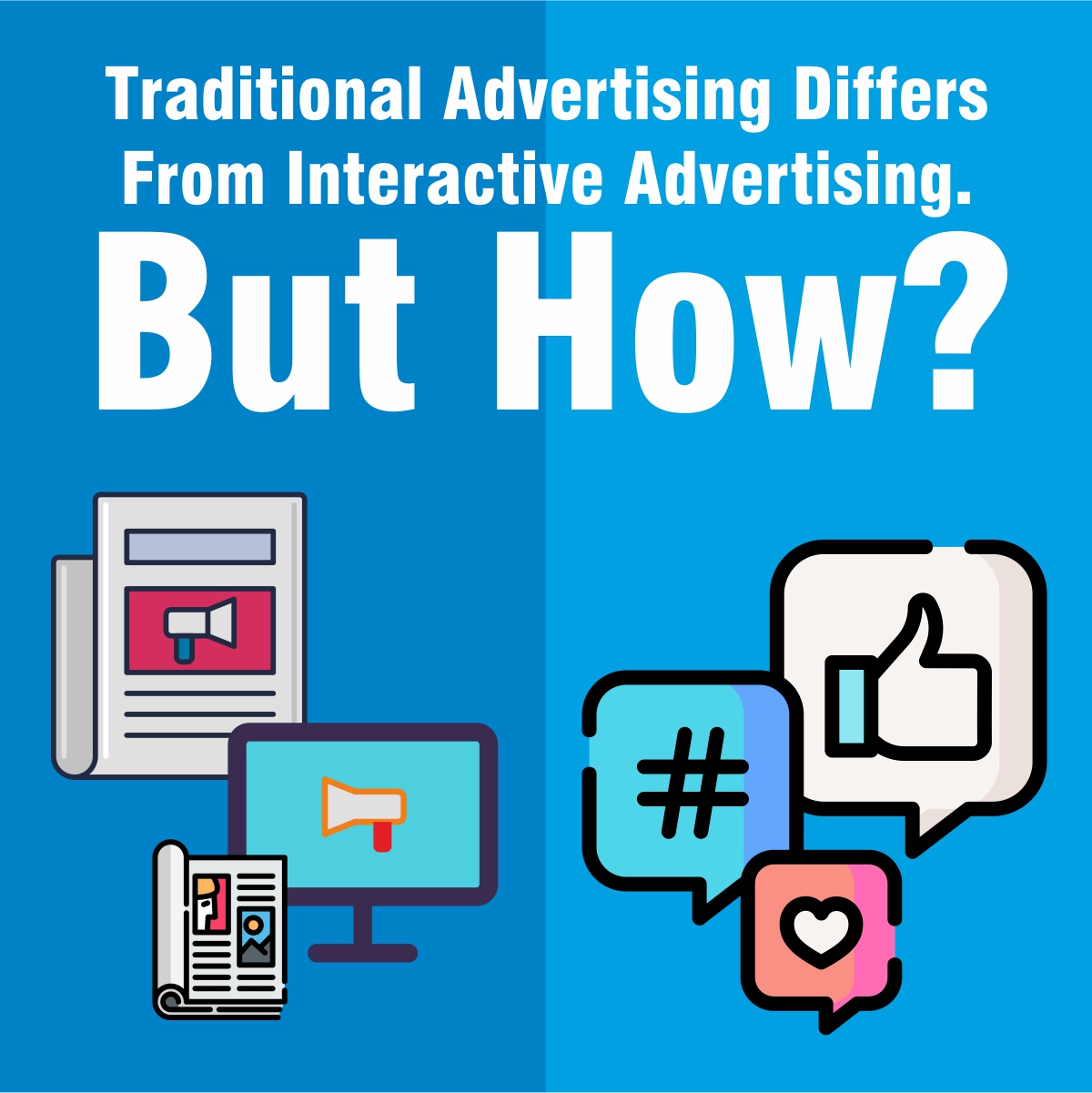
How Does Traditional Advertising Differ from Interactive Advertising?
The word Advertising originates from Latin word advertere — literary meaning to turn forward. From word-of-mouth advertising to spreading over mass media and today’s’ internet – advertisements have come a long way while retaining their essence intact.
For centuries now, people have been using advertising as a mode to interest the potential customers towards their products, services or events. It started with the ancient Egyptians’papyrus adverts, moved to the town-criers and sign-boards of medieval Europe and finally evolved into the present era with Traditional and Interactive advertising.
Let’s take a look at exactly how these two types of advertising interplay in the modern world.

Traditional Advertising and Interactive Advertising: An Overview
Traditional advertising emerged during the late 18th centuries as paid adverts and gradually encompassed all of the following forms:
- Print media (newspapers, magazines, handbills, brochures, pamphlets, etc.)
- Outdoor billboards
- Radio broadcasts
- Television adverts
With the advent of digital media and the internet, came the brand new trend of Interactive advertising – ads that ‘spoke’ to the customers, ‘called to action’ directly. The first online ad was posted as a web banner in October 1994. Since then digital marketing and interactive advertising have been spreading over various platforms, such as:
- Social media (advertising through Facebook, Instagram, LinkedIn, Twitter, etc.)
- Video ads (using YouTube and other video platforms)
- Web banners
- Offline display windows
What are the Main Differences between Traditional Advertising and Interactive Advertising?
Apart from the clear distinctions of the mediums used in these two forms of advertisings, there’re some basic conceptual differences as well.
Let’s make a table of the key differences:
| Traditional Advertising | Interactive Advertising |
| Intended for a wide audience | Intended for the targeted audience |
| Closed-form of communication like one-way traffic | Open communication through CTAs (call-to-action) |
| Reflects mass marketing strategies – one message for all | Reflects the customised approach of digital marketing based on data analytics for each set of viewers |
| Its content is all about the products/services of the ad | Its contents are more about the end customer – resonating with personal requirements to create a virtual need for the advertised products/services |
| Slow and static progress-line after publication/broadcast of the ad campaign | Dynamic progress with real-time access to tweak it based on reports and metrics to measure the ad’s success rate |
| The result of the ad campaign is more of a prediction after it’s been publicised | Results can be controlled better than in any traditional form of advertising |
Each form of advertising has its pros and cons. It’s always recommended to seek professional help from a reputed advertising company to build reliable brand-values over any mode of advertising. Especially to stand out among your competitors in a metropolitan market, do reach out to Blueantz Advertising, a renowned advertising agency in Kolkata for best results, before finalising your investments in advertising.

